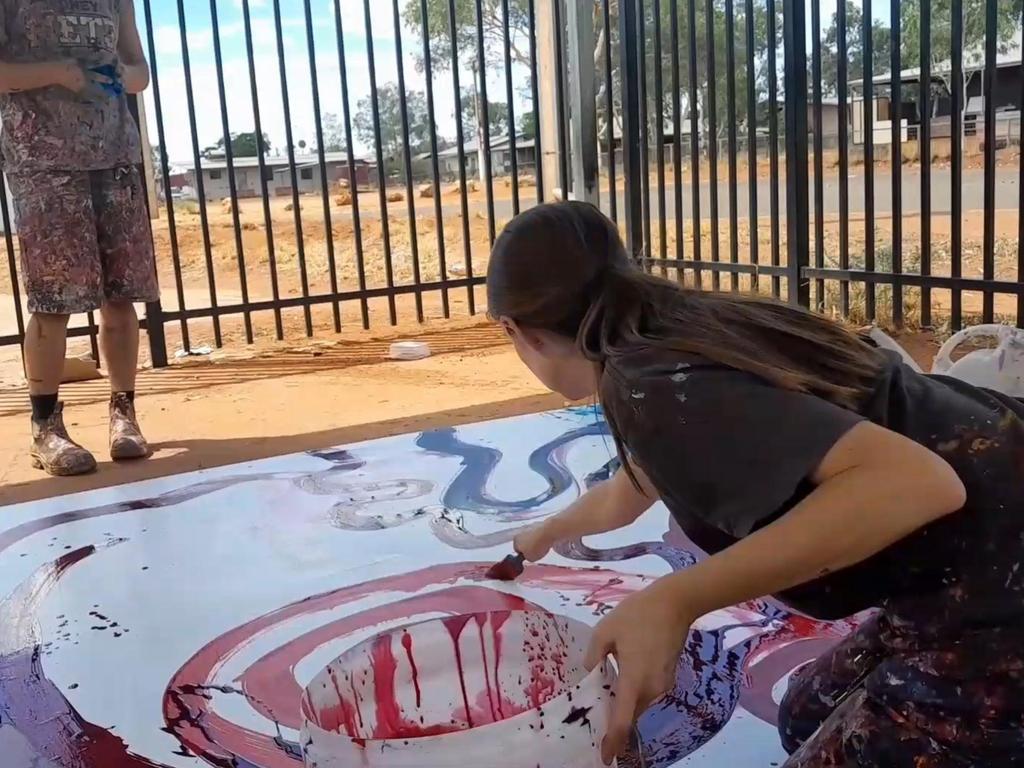No whitewash in APY Lands Aboriginal art scandal

Sydney Morning Herald art critic John McDonald, a former head of Australian art at the National Gallery of Australia in Canberra, has helped to put the issue into context. Tellingly, his appraisal did not appear in the newspaper for which he writes but on a self-published blog.

McDonald said the SMH had fallen into the trap of feeling it had to be “supportive” of institutions such as the NGA, running a two-week “campaign” to argue the case for more government funding. Other media outlets have been similarly incurious.
There is no doubt the issues raised by Greg Bearup in his reports present a difficult challenge for the NGA and the APY Arts Centre Collective in South Australia. This is particularly so given the NGA is about to host its showcase winter exhibition, Ngura Pulka, which it has said has been “entirely conceived, created, directed, and determined by Anangu people”. For an earnest media, uncomfortable claims must not be allowed to distort the need for truth.

We agree with McDonald that it is the task of journalism to report truthfully on such matters. And that the media more generally fails if it makes a collective decision not to engage with difficult subject matter because it is considered important to support an industry, organisation or some other entity.
We take an independent and fearless approach to all of our reporting. Our competitors may have other objectives but we expect public institutions to take seriously the facts we have uncovered and issues we have raised. A months-long investigation has uncovered claims by five artists and six white studio staff that white staff routinely painted substantial parts of Indigenous art. Artists were angry their Tjukurpa, ancient stories of custom and law, allegedly were being interfered with. Others claimed they felt a deep sense of shame having their Tjukurpa meddled with by white people.

The APYACC has consistently and vehemently denied that white staff interfered in the making of Indigenous art. The NGA has announced its own investigation of the authenticity of 28 artworks that have been painted for the Ngura Pulka exhibition, but Philip Watkins, the Indigenous chief executive of Desart, the peak body representing 35 central desert art centres and thousands of artists, says the investigation must look into the culture that allegedly allowed such practices to take hold.
The NGA has a clear conflict of interest on this issue and is therefore poorly placed to investigate. As the responsible federal minister, Tony Burke must seize the initiative to put things right, establish a proper inquiry and restore confidence in the Indigenous art market. The inquiry should focus on the ethical considerations raised by our reporting, and not become muddied by wide-ranging grievances in the Aboriginal art world unrelated to the role of white helpers in APYACC works.

As we editorialised when our first stories on claims of white involvement were published, the issues uncovered involve cultural integrity, fair treatment and what makes Indigenous art special. Indigenous artists must be free to paint as an expression of their connection to Tjukurpa, the spiritual connection that links Anangu to the environment and their ancestors. Some people may well accept that a painting will speak for itself, regardless of how it was created, but collectors are entitled to know exactly what they are buying, and our top institutions must be able to speak to the provenance, authenticity and legitimacy of the exhibitions they curate.






The art world, other media outlets and the federal government are struggling to come to grips with the results of our investigations into the involvement of white helpers in some of the nation’s most sought-after Indigenous artworks. This is all the more reason a thorough, independent and expeditious inquiry is needed into what has happened and what it means for the world of Indigenous art and those who collect it.